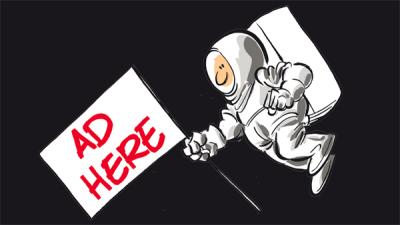Beyond Marx’s theory of ‘Commodity Fetishism’, the materialist synergy of exchange, marketing and business in our modern consumerist society has become a truly visual affair. We in Mauritius, however, far from the madding crowd of neo-capitalist societies in Europe, Asia or America, we are not absent invitees at the table of market dynamics involving their fair share of visual advertising. From mainstream diffusers such as press adverts, billboards, posters, flyers, to the digital platform of Facebook or LinkedIn, every marketing media has developed towards a denser form of visual advertising during the last decades in Mauritius.
The upheaval of digitisation in the creative industry with the aid of more powerful software and hardware, has led the advertising strategies to become more elaborate, and to experiment towards the production of more complex and sometimes inaccessible works of higher art. Today through newspapers or billboards, our visual attention is bombarded by layers of retinal complexity through the advertising message. Which leaves the latter diluted, obscured and sometimes nullified. Bombastic photography and surreal photomontages have become the norm, resulting in posh creativity, lucrative colours and concepts that would have little impact on the busy everyday mind.
The methodology used by creatives and advertising companies is one unfortunately based on a wrong formula, dispensed moreover by design schools and courses: ‘good advertising is about getting attention’. This simplistic philosophy of cause and effect has been sublimated during the last decades in our local, cultural understanding of what good visual marketing should look and feel like. But as soon as our attention is seized, we are often rewarded with little in terms of genuine content, fulfilment and satisfaction, leaving us with a sense of having been misled. This of course has generated a whole culture of advert bashing and mistrust in the whole advertising industry.
To me as a graphic designer, advertising should deliver more than pure cognizance and fulfilment of our materialistic needs. Advertising should sell ideas, values, a sense of success and attainable quality, in genuine manner.’Many a small thing has been made great, by the right kind of advertising’ wrote Mark Twain. The future of visual advertising locally is definitively at a crossroad. I envision two different pathways with two distinctive outcomes. The causality of each will have distinctive effects on the future of our visual language, aesthetic appreciation and general vision of what good advertising is for our local culture.
The first possibility and the one we are heading towards, is a growing disproportion between advertising and its informational content. As the disparity between what is being communicated in essence and what is being visually advertised becomes larger, it will require a deeper understanding to assess the functional purpose and content, which will become shelled in misunderstanding. The visual enrichment of the adverts will lead towards aesthetic recognition, while the poverty of content will signify a further mistrust towards the purpose of the industry. Slowly the market will become one of pure aesthetics, with little relevance to the product or service being advertised, leading to a general feeling that we are not being sold what we see.
But the second possibility which I hope will be the future of visual advertising in Mauritius, is a deepening sense of philosophy through ethical development and engagement within the industry. We need the people within it, from creative schools’ lecturers to design professionals, to meditate and focus towards a humanist curriculum and understanding of the role of visual communication in an increasingly fast-paced, materialistic modernist society. In a world of increased connectivity where the new digital media through smartphones, applications, media platforms will provide more infographics and digitised information in our everyday life, we need to go beyond the grandiose techniques of Photoshop. Design schools should start dispensing a methodology that will usher on bringing forward a new brand of creative minds, with a genuine social awareness of their role as defining the advertising industry’s design codes. A methodology based on sustainable creativity, dispensation of ethical messages, use of recyclable materials and the building of a visual communication that is democratic in form and understandable at all levels of society.
My personal belief is that genuine visual marketing and advertising is a sublimation and celebration. Not of the product or service being advertised. But of what they bring to our lives to help us fulfill our potential and our dreams. Great advertising at its humane best, will deliver not only materialistic satisfaction, but will truly aid in bettering our quality of life through visual understanding.
The Future of Visual Advertising in Mauritius
- Publicité -
EN CONTINU ↻
- Publicité -

